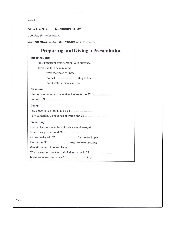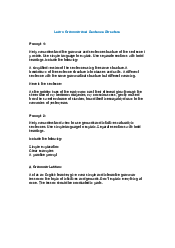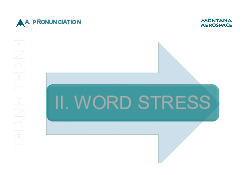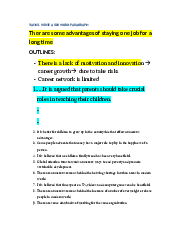


























Preview text:
Quét mã QR để đọc bản đầy đủ Contents
Keywords–Skimming–Scanning–Eyemovement..................................................... 6
GiớithiệuIELTSReading–AcademicModule............................................................... 8
Chapter1:Chiếnlượccácdạng
Unit1:Hoànthànhcâu(SentenceCompleon)
&Trảlờicâuhỏi(Short–AnswerQueaon)........ ........................................................... 23
Unit2:Hoànthànhbảng(Notes–TableComleon)........ ............................................ 50
Unit3:TRUE/FALSE/NOTGIVEN&YES/NO/NOTGIVEN....................................... 72
Unit4:Dạngtrắcnghiệm(MulpleChoice).................................................................... 94
Unit5:Cácdạngbàiphânnhóm(Categorizaon).......................................................... 11 1
Unit6:Nốiêuđề(MatchingHeading)............................................................................ 135
Unit7:Nốithôngn(MatchingInformaon).................... ............................................. 156
Unit8:Nốicâu(MatchingSentenceEndings)............................. ................................... 182
Unit9:Dánnhãnbiểuđồ(DiagramLabelling)............................................................. .. 202
Chapter2:Luyệntậptổnghợp
IELTSPracce1..................................................................................................................... 212
IELTSPracce2..................................................................................................................... 241
IELTSPracce3..................................................................................................................... 269 Key Words - Skimming Scanning - Eye Movement
Dướiáplựcxửlýthôngnđểtrảlời40câuhỏicủa3bàiđọcIELTS(khoảng2400-2700
từ)trongthờigian60phút,tốcđộcủaviệcxácđịnhvịtrícácthôngntrongbàiđọcsẽ
quyếtđịnhtốcđộlàmbàivàảnhhưởngtrựcếpđếnđiểmsốcủathísinh.Đểtốiưutốc
độmkiếmthôngnquantrọng,thísinhcầnlàmchủ4kỹthuậtsau:Kỹthuậtxácđịnh
từkhóa–Keywords,kỹthuậtSkimming,kỹthuậtScanning,kỹthuậtdichuyểnmắt–Eye movement.
Kỹthuậtxácđịnhtừkhóa
Khiđọcvàphânchcâuhỏi,thísinhcầnphảixácđịnhvàphânloạitừkhóatheomứcđộ
hữudụngtrongviệcmkiếmthôngntrongbàiđọc.
Từkhóađượcchiathànhbaloại:
•Từkhóakhóthaythế:baogồmcáctênriêng,consốnổibật,hầunhưkhôngbaogiờbị
thaythếtrongbàiđọc→Ưuênsửdụngloạitừkhóanàyđểmkiếmthôngn.
•Từkhóadễthaythế:baogồmcácdanhtừvàcóthểbịthaythếbằngcáchdiễnđạtkhác
trongbàiđọc→SửdụngloạitừkhóanàyđểmkiếmthôngnkhiđềbàikhôngchứaTừ khóakhóthaythế.
•Từkhóachìm:baogồmcácđộngtừ,nhtừ,hoặcchủđềcủabàiđọc.Độngtừvành
từtronghầuhếtcáctrườnghợpsẽbịthaythếbằngtừđồngnghĩahoặccáchdiễnđạt
kháctrongbàiđọc.Chủđềcủabàiđọcsẽđượclặplạinhiềulầnnênkhôngcónhiềugiá
trịtrongviệcxácđịnhthôngncầnthiết→Sửdụngloạitừkhóanàyđểhiểunộidung
chínhcủađềbài.Chỉdùngđểmkiếmthôngnkhiđềbàikhôngchứa2loạitừkhóatrên,
hoặckhikhôngxácđịnhđượccáchdiễnđạtthaythếcho2loạitừkhóatrêntrongbàiđọc. 6
Thứtựưuênsửdụngtừkhóađểxácđịnhthôngncầnthiết:Từkhóakhóthaythế→
Từkhóadễthaythế→Từkhóachìm.
TrongtrườnghợpđềbàikhôngchứaTừkhóakhóthaythế,thísinhcầnsửdụng2loạitừ
khóacònlạiđểxácđịnhtrôngncầnthiếttrongbàiđọc. KỹthuậtSkimming
Skimminglàkỹthuậtgiúptăngtốcđộđọchiểuvàtănglượngthôngnếpthukhiđọc
thôngquaviệcnhómtừ(wordgrouping)vàđọcnhanh(speedreading).KỹthuậtSkimming
đượcdùngđểđọchiểunộidungchínhcủamộtđoạnvănhoặctoànbộbàiđọc,vàđược
ứngdụngđểxửlýnhiềudạngcâuhỏitrongbàithiIELTSAcademicReading,nhưdạngNối
êuđề-Matchingheadings. KỹnăngScanning
Scanninglàkỹthuậtđọclướtvănbảnvàdùngđểxácđịnhnhanhchiếtcụthểtrongbài
đọcmàkhôngcầnhiểunộidung.CácdạngbàiđiểnhìnhcầnsửdụngScanninglàdạng
TRUE/FALSE/NOTGIVENhoặcYES/NO/NOTGIVEN,dạngđiềntừ,dạngnốithôngn,
vàdạngtrắcnghiệm.
Kỹthuậtchuyểnđộngmắt(eyemovement)
Eyemovementlàmộtkỹthuậtđọclướtnhằmtăngtốcđộmkiếmthôngntrongbài
đọcbằngviệchạnchếviệcđọchiểuthôngn.Thayvìđọctừtrênxuống,ngườiđọcsẽ
bắtđầutừcuốiđoạnvănlên,vàtheotrìnhtừtừphảiquatrái. 7 Chapter1
Chiếnlượccácdạng 22 Hoànthànhcâu
& Trảlờicâuhỏi
DạngbàihoànthànhcâulàdạngbàiphổbiếnluônxuấthiệntrongbàithiIELTSReading.
Đềbàiyêucầuthísinhmtừphùhợptrongbàiđọcđểđiềnvàochỗtrốngtrongcáccâu đượccungcấp.
1.Chiếnlượcxửlýdạngcâuhỏi Bước1 Bước2 Bước3 Idenfying Spong
Extracng&Answering
Xác định và phân
Scan bài đọc để m
Đối chiếu phần chứa loạitừkhóa.
khu vực chứa thông
thôngnvàcâuhỏi.Đọc
• Xác định dạng từ
n cần thiết (dựa trên
hiểu phần thông n vừa
cần điền vào chỗ
nhữngtừkhoáđãm). mđược.
trống và số từ cần
• Khi scan đoạn văn,
• Chọn từ và đối chiếu
điềndựatheođềbài.
thí sinh lưu ý cần sử
với dạng từ cần điền đã
dụng kỹ thuật Eye-
xácđịnhởbước1. movement.
•Đọclạicâuđểmộtlần
nữakiểmtrađộchínhxác củathôngn. 23 2.Vídụ
Someanimalsareactuallyverywell-knownfortheiroutstandingintelligencecompared
to most other types of animals in thewild, one of the prime example is chimpanzee.
Chimpanzeeisaspeciesofapethatismostcloselyrelatedtohumans,whichinhabitin
tropicalforestsandsavannas.Somebasicknowledgeaboutchimpanzeesisthattheirdiet
isprimarilyvegetarian,consisngofmostlyfruits,leaves,andseedsbutalsobirdeggsand
chicks,manyinsects,whichprovidethemwithenoughnutrientsforthedevelopmentof
mentalability.Chimpanzeesarehighlyintelligentandareabletondsoluonsformany
kindsofproblemsposedtothembyhumantrainersandexperimenters.Sincethelast
fewyearsofthe90s,anumberofresearchershavesuccessfullytaughtchimpanzeesto
usesignlanguagesincludingthosebasedonthedisplayoftokensorpictorialsymbols.
Also, communicaonbetweenchimps in thewildtakestheformoffacial expressions,
gestures,andalargearrayofvocalizaons,includingscreams,hoots,grunts,androars.
Chimpanzeesarealsowell-knownfortheirskillsinusingtools.Infact,varioustoolsare
usedinseveralcontexts.Forexample,Chimpanzees“sh”fortermitesandantswithtools
madeofgrassstalks,vines,branches,peeledbark,andmidribsofleaves.Inothercases,
theycrackhardnutsopenbyusingstones,roots,andwoodashammers,andtheyuse
“leafysponges”(whichareahandfuloffoldedleavesormoss)todrinkwater. Quesons1-4
Choose NOMORETHANTWOWORDS from the passage for each answer:
1.Chimpanzeeisaspeciesofape,whosenaturalhabitatincludes(a).................... ...............
..................and(b).........................................................
2. Bytheendof20thcentury,chimpanzeeshavelearnthowtouse(c)................................
.......................(basedontokensdisplayorpictorialsymbols).
3.Chimpanzeesarefamousfortheirskillsinusingdierentkindsof(d).............................. ........................
4.(e)..............................................................areusedwhenchimpanzeesdrinkwater. 24
3.Ápdụngphươngpháp Bước1:Idenfying
*Xemlạiphầnlýthuyếtvềtừkhoátrongphần1đểhiểucáchxácđịnhtừkhoádễscan.
natural habitatlàcụmdanhtừ
→Từkhoádễthaythế
Chimpanzeeisaspeciesofape ,whosenaturalhabitat includes(a).....................
and(b).....................
Do Chimpanzee là chủ
Apelàdanhtừchỉ1loài includelàđộngtừ
đề của bài đọc và sẽ
động vật nên sẽ khó bị →Từkhóachìm
đượclặplạinhiềulần
thaythếtrongbàiđọc. →Từkhóachìm
→Từkhóakhóthaythế
Xácđịnhdạngtừcầnđiềnvàsốlượngtừcầnđiền:
...naturalhabitat includes (a)...........and(b)............
• Động từ include được
dùngđểliệt kêmộtcốví
dụchodanhtừtrướcđó:
natural habitat. Chính vì
Choose NOMORETHANTWOWORDS from the passage
vậy,(a)và(b)sẽlàvídụcho for each answer
natural habitat vàlà dạng
Danh từ/Cụm danh từ.
• Số từ cần điền: Không quá2. 25 Bước2:Spong
Thứtựưuênsửdụngtừkhóađểmthôngn:ape, natural habitat →Chimpanzee,include
Some animals are actually very well-known for their (1)Từkhoá1
outstanding intelligence compared to most other
typesofanimalsinthewild,oneoftheprimeexample (2)Từkhoá2
ischimpanzee.Chimpanzeeisaspeciesof(1)ape that
Inhabit=sinhsống,cưngụ
ismostcloselyrelatedtohumans,which(2)inhabitin
→ dạng động từ của từ
tropical forestsandsavannas. Some basic knowledge habitat
about chimpanzees is that their diet is primarily
vegetarian, consisng of mostly fruits, leaves, and Điểm nhìn đầu
seeds but also bird eggs and chicks, many insects,
ên và hướng di chuyển
which provide them with enough nutrients for the củamắt
developmentofmentalability.
Bước3:Extracng&Answering
Chimpanzeeisaspeciesofapethatismostcloselyrelatedtohumans,whichinhabit
intropicalforests and savannas.
Chimpanzeeisaspeciesofape,whosenaturalhabitatincludes(a).......................and (b).......................
→Đápán:(a)tropicalforests,(b)savannas(đềulàDanhtừvàđộdàikhôngquáhaitừ,do
đóthỏamãnđiềukiện)
●Trongcácdạngbàiđiềntừ(ngoạitrừdạngbàiSummary),cácthôngnthườngsẽ
đilầnlượttheothứtựcâuhỏi(đápáncâu1sẽnằmtrướcđápáncâu2).
●Cácđápánkhôngcáchnhauquáxa(cóthểcách1-2đoạnrấtngắn,khôngcách đến3đoạn).
●Saukhi chọnxongđápántrongđoạn,cầnđọcếpngaytừcâucóđápánđó,
khôngđượcbỏcáchxuốngđoạndưới(bởicónhữngđápánrấtsátnhau). 26 Practice Bàitập1
Doingmoreexercisewon’thelpyouburnmorecalories
A.Asimplecalculaonliesattheheartofalotofmainstreamweightlossadvice.Ifcalories
outexceedcaloriesin,youwillloseweight.Itiswhybothexerciseanddietaresaidto
bekeytostayingtrim,andwhymanyofusfeelwecanmakeamendsforoverindulging
byjoiningthegymordusngoourrunningshoes.Itnowturnsoutsomethingweirder
isgoingon.Workingoutalotdoesn’tappeartoburnmorecaloriesthandoingalile.In
fact,goingmadinthegymdoesn’tseemtoburnanymorecaloriesthanmoderateacvity
afewdaysaweekandtakingthestairs,forinstance.
B.Someofthebiggestcluesthatsomethingwasupwiththeexerciseandweightloss
equaonliefarfromthegym,ontheplainsofTanzania.Here,theHadzapeoplelive
as we all once did, as hunter-gatherers.The men walk about 10 kilometres each day,
stalkinggamewith bowsand arrows,whilewomenspend hourson the move, digging
forwild tubers andpickingberries.Afewyears ago,Herman Pontzer, anevoluonary
anthropologist at Hunter College in NewYork, and his colleagues headed to Tanzania
to study the Hadza and their metabolism. Pontzer wasn’t expecng to reveal any big
mysteries aroundexercise.“Itstarted othat wewantedto just ask a basicqueson:
‘Howmanycaloriesdoyouneedtoburntoliveasahunter-gatherer?”hesays.Tothe
team’samazement,theHadzagotthroughonlyslightlymorethanWesternerswhodrive
toajobtositallday,withthemenusingupabout2600caloriesandthewomen1900.“I
couldn’tbelieveit,”saysPontzer.
C. The ndings caused a sr.They called into queson the widely accepted idea that
sedentarylifestylesinmanysocieesareresponsiblefortheobesityepidemic.Instead,
Pontzerandhisteambegantowonderwhetherourdailyenergyexpenditurecouldhave
evolvedtobexedattheselevels,regardlessofwhetherwesitatadeskalldayorsearch
theplainslookingforournextmeal.
Tobackuptheidea,what’sneededistostudyotherwaysoflivingtoo,includingpopulaons
withWesternlifestyles.That’swhereLaraDugasofLoyolaUniversityChicagocomesinto
thestory.Herteamkiedoutnearly2000peoplefromtheUS,Ghana,Jamaica,South
AfricaandtheSeychelleswithacvitymonitorsforeightdaystogaugetheirbasicpaern 32
ofphysicalacvity.Shethentrackedtheirweightoverseveralyears.Theupshot?Acvity
levelsdidn’tpredictweighttwoyearslater.Infact,thosewhomettheUSguidelineof150
minutesofmoderate-intensityexerciseperweek,accordingtothemonitordata,tended
tohaveputonmoreweightthanthosethatdidless.Aparadoxindeed.
D.In2016,PontzerandDugasjoinedforces.Theylookedinmoredetailatover300of
thepeopleinDugas’soriginalstudy.Itturnedoutthatthosewhoweremoderatelyacve
usedupabout200morecaloriesperdaythansedentarypeople,butaerthat,calorie
burningplateaued.Thosewhoexercisedeverydaydidn’tburnanymorethanthosewho
workedoutafewmesaweek.“Onlyatthevery,verylowenddidweseeanythinglikea
trendofloweracvitybeingpairedwithlowerenergyexpenditure,”saysPontzer.
E. This view tallies with calculaons of how much people exercise whenviewed over
longer me spans, says Glenn Gaesser atArizona State University.“Ifyou add up the
amountofcaloriesindividualswouldexpenddoing150minutesofexerciseaweek,mes
52weeksoftheyear,youcomeupintotheliterallytensofthousandsofcaloriesthatare
expended.”Andyetexercisersonlyweigharound2kilogramslessonaverage,hesays.As
theevidencepilesup,saysPontzer,theideathatacvitydictateshowmanycaloriesyou
burnlooks“preynaive”.
F.Itseemsmetoputthecaloriesin,caloriesoutequaontorest.Buthowcanitbethat
peopledomoreexercisewithoutseemingtoexpendextraenergy?Theassumponhas
beenthattheyeatmoretomakeupforit,whetherbecausetheyarehungrierorfeellike
theyhaveearnedit.“Youcanconsumeadoughnutinlessthanaminute,”saysGaesser.
“Butthatminuteofconsumingthedoughnutmighttakeanhourormoreofwalkingto
matchin terms of calories.”It also doesn’t help that people grossly overesmatetheir
energyuseduringexercise.Inonestudy,peoplewereassignedatreadmillworkoutand
thentoldtoesmatehowmanycaloriestheyburnedandeatanequivalentamountfrom
abuet.Theyguessedtheyusedup800caloriesandateabout550.Inreality,theyhad
burnedjust200.ThatmighthelpexplainwhyDugasfoundthatthosemeengUSexercise
guidelinestendedtohaveputonmoreweight.Butitwouldn’texplainwhytheHadza’s
prolicacvitydoesn’tadduptomuchmoreenergyconsumponoverthecourseofa
daythanasedentarylifestyle.
G.Soanothersuggesonforthisexerciseparadoxisthatourbodiescompensatefora
hardworkoutbymovinglesstherestoftheday.Someclueshavecomefrommice.When
given running wheels to prompt exercise, theywere found to move around less than 33
usualinbetweenboutsofacvity.Thenumberofcaloriessavedfrommovinglessthe
restofthedayalmostexactlynegatedthecaloriesburnedfromrunning.Itseemspeople
makesimilarsortsofadjustmentswhentheyembarkonanewexerciseregime,evenif theydon’trealizeit.
H.Ratherthanthinkofpeopleasacveorsedentary,anincreasingnumberofusareboth
acve,playingsportsorworkingoutregularly,andsedentary,spendingtherestofthe
daysing,saysJamesBes,whostudiesnutrionandexerciseattheUniversityofBath,
UK.Soitisamistaketojustcountthecaloriesburnedonatreadmillandnotconsiderthe
restoftheday,hesays.“Alltheseotherpartsofexercise,justmovingaroundmore,can
bethebiggestcomponentofenergyexpenditureandcandictatewhichpersonmightbe
leanandwhichpersonmightbeobese,”hesays.
I. Ulmately, it is hard to avoid the conclusion that diet oers greater potenal than
exercisetogetthecalorieequaonworkingmoreinyourfavor.Butexercisedoessll
haveaplacein theweight-lossjourney:onceyouloseweight,it canhelppreventthe
commonproblemofpungitbackon.Andthereareplentyofotherexcellentreasons
toexercise.“TheHadzaareaboutthreemesmorephysicallyacvethananyWestern
populaon,”saysPontzer.“And,notashocker,theyalsohaveexcellenthearthealth,they
nevergetdiabetes,they’renotoverweight.Theyageextraordinarilywell.”Beingacve
improvesoverallhealth,mobilityandbrainfuncon,andreducestheriskformanychronic
condionsincludingAlzheimer’sdisease.“Exercisehashealth-promongaconsthatfar
exceeditsroleofregulangweight,”saysGaesser,“sodon’tbedisappointedifyoudon’t
losealotofweight.” Quesons1-5 Complete the notes below.
Choose NOMORETHANTWOWORDSORANUMBER for each answer.
Write your answers in the boxes 1 - 5 on your answer sheet. 34
Energyexpenditurefromexerciseandweightloss •
Inhabitin1…........……... ....................................…
…...as2…..........................................................…… ………... •
Themen’sjob:hunngwithbowsandarrows. TheHadza •
Thewomen’sjob:diggingfortubersand pickingberries. •
Themen’senergyexpenditure:upto3.........
…….....................................…………...calories,700 morethanthewomen’s.
2000 people from the •
Monitored for more than a week to measure US,Ghana,
their acvity’s 4 ……................................................ Jamaica, South Africa .…………... andthe •
ThosewhofollowedtheUSexerciseguidelines Seychelles
ironicallygainedmoreweight •
Encouraged to 5 ……….....................………... with Mice
running wheels but found to move less than usual. Quesons6-8 Complete the summary below.
Choose NOMORETHANTWOWORDS from the passage for each answer.
Write your answers in the boxes 6 - 8 on your answer sheet.
Numerousstudiesareindicaveofthemoreconsiderable6………….....................................
.…….ofproperdietaryregimescomparedtothatofexercise.Thatsaid,regularexercise
holdsremarkablehealth-relatedmerits,notlimitedto7………........ ............................................
....……….,ascanbeseeninthelifestyleoftheHadza,whoaremuchmorephysicallyacve
thanWesternersare.Exercisecannotonlybeeraperson’soverallhealth,mobilityand
brainfunconbutwardomany8………......................................……..…aswell. 35
Ápdụngphươngpháp Bước1:Idenfying
Đọccâuhỏivàgạchchântừkhoá
Choose NOMORETHANTWOWORDSORANUMBER for each answer.
Sốtừcầnđiền:Khôngquá2/hoặcmộtconsố Câu1,2: Hadzalàtênriêng
→Từkhóakhóthaythế
TheHadza inhabitin(1).....................as(2).....................
Inhabitlàđộngtừ →Từkhóachìm
(1)đứngsaugiớitừ in,vìvậycóthểđoántừcầnđiềnlàDanhtừchỉđịađiểm.
(2)đứngsaugiớitừas,vìvậycóthểđoántừcầnđiềnlàDanhtừchỉchức năng. Bước2:Spong
Lưuýthứtựưuênsửdụngtừkhóađểmthôngn:TheHadza→ inhabit
Someofthebiggestcluesthatsomethingwasup (1)Từkhoá
withtheexerciseandweightlossequaonliefar
fromthegym,ontheplainsofTanzania.Here,(1)
(2)Từkhoáinhabit”=live theHadza sinhsống,cưngụ
people(2)live as we all once did, as hunter-gatherers. Điểm nhìn đầu
ên và hướng di chuyển củamắt 36
Bước3:Extracng&Answering
ontheplainsofTanzania.Here,theHadzapeopleliveaswealloncedid,as hunter-gatherers.
TheHadzainhabitin(1)...................................................................as(2).......................
→ĐápánlàTanzaniavàhunter-gatherers
Ápdụngtươngtựcâu2-8 Bàitập2
Favoritemeforgivingbirth
A.Doesiteverseemlikeyou’reinvitedtoanawfullotofsummerbirthdaygatherings?For
goodreason.IntheUnitedStates,mostbirthsoccurbetweenJuneandearlyNovember.
Count back nine months, and you’ll see that places most concepons in the fall and
winter.What’s going on? Isthe crisp autumn air,or thejoy(or anxiety) of theholiday
season,triggeringmoreunprotectedsexualintercourse?Orisitsomethingelseenrely?
B.Itturnsoutreproduconisseasonalacrossalllivingorganisms,fromplantstoinsects,
toreples,tobirdsandmammals–includinghumanbeings.Theulmateexplanaonfor
thisphenomenonisanevoluonaryone.Earth’senvironmentisseasonal.Aboveorbelow
theequator,theyearisstructuredbythewinter,spring,summerandfall.Inequatorial
regions,thewetanddryseasonspunctuatetheyear.Organismshaveevolvedstrategies
toreproduceatthemeofyearthatwillmaximizetheirlifemereproducvesuccess.
Humans are no excepon and maintain this evoluonary outcome: birth seasonality.
Researchers,including us, haverecently beenworking to understandmore aboutwhy
birthsareseasonalbecausethesepaernscanhaveabigimpactonchildhooddisease outbreaks.
C.Themonthlybirthrateovermewasper1,000people.Overthedecades,it’snota
smoothlinebecauseeachyearhasaninternalpeak.Theannual mingofeachstate’s
peakinnumberofbirthscorrelateswithitslatude.Morenorthernregionsseeabirth 37 Bàitập1 Đoạn2 1.Tanzania
“Some of the biggest clues that something was up
withtheexerciseandweightlossequaonliefarfrom
the gym, on the plains of Tanzania. Here, the Hadza
peopleliveaswealloncedid,ashunter-gatherers.” Từkhoátrongbài: 2.hunter-gatherers “live”=“inhabit”
→Đápánđúngchocâu1là“Tanzania”
→Đápánđúngchocâu2là“hunter-gatherers” Đoạn2
“Totheteam’samazement,theHadzagotthroughonly
slightlymorethanWesternerswhodrivetoajobtosit 3.2600
allday,withthemenusingupabout2600caloriesand
thewomen1900.“Icouldn’tbelieveit,”saysPontzer.”
Phần này cho thấy đàn ông Hadza êu tốn 2600
calo/ngày(energyexpenditure)
→Đápánđúnglà“2600”. Đoạn4
“Herteamkiedoutnearly2000peoplefromtheUS,
Ghana,Jamaica,SouthAfricaandtheSeychelleswith
acvity monitors for eight days to gauge their basic 4.basicpaern
paernofphysicalacvity.” Từkhoátrongbài:
“Gauge”=“measure”
“eightdays”đượcthaybởi“more than a week”
→Đápánđúnglà“basicpaern” 43



